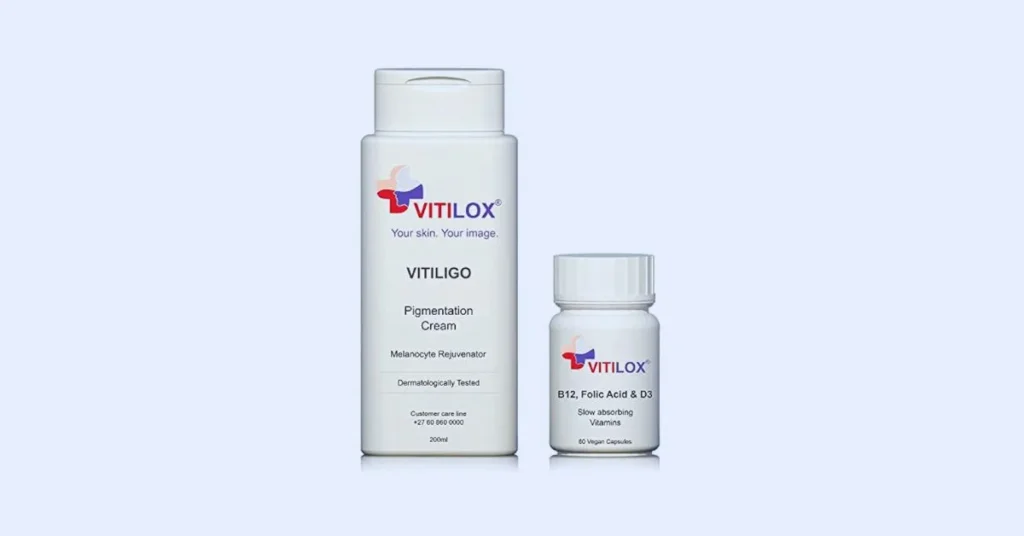Vitilinox Cream Review: How It Helps Treat Vitiligo Naturally
Introduction to Vitilinox
Vitilinox is a specialized dermatological formulation designed to manage Vitiligo, a condition that causes the skin to lose its pigment. People with vitiligo develop white or pale patches on their skin due to the loss of melanocytes, the pigment-producing cells. Vitilinox aims to support the repigmentation of affected areas by stimulating melanin production. Dermatologists often recommend it as part of a broader treatment plan to restore skin color and boost confidence.
Medical Background
Vitiligo is an autoimmune condition where the immune system mistakenly attacks melanocytes. This attack leads to white or lighter patches that can appear on any part of the body, including the face, hands, arms, and feet. The condition is not life-threatening, but it often affects self-esteem and mental well-being. Managing vitiligo requires long-term treatment, lifestyle adjustments, and emotional support. Vitilinox was developed to address this challenge by encouraging pigment restoration while minimizing side effects.
Also Read: Assimilasjon: Understanding the Process of Integration
Composition and Active Ingredients
Vitilinox contains a blend of natural extracts, antioxidants, and agents that support melanogenesis (melanin production). Its key components often include:
- Psoralen derivatives – Natural compounds that make the skin more responsive to light therapy and activate pigment cells.
- Vitamins and minerals – Ingredients such as Vitamin B12, Vitamin D, and zinc to nourish skin cells and support healthy pigment production.
- Immunomodulating agents – Substances that calm immune activity and protect melanocytes from further damage.
This unique combination helps create a skin environment that supports the survival and activation of melanocytes.
Mechanism of Action
Vitilinox works in several ways to promote repigmentation. It reactivates dormant melanocytes and stimulates them to produce melanin again. It also encourages melanocytes to migrate from healthy areas to depigmented regions. By reducing oxidative stress and calming inflammation, Vitilinox creates better conditions for these cells to survive. When combined with light therapy such as narrowband UVB, its effect often becomes stronger, helping pigment return more quickly.
Usage and Dosage Guidelines
Dermatologists usually recommend applying Vitilinox once or twice a day. Users should clean and dry the affected area before application to allow better absorption. Consistency is crucial because repigmentation takes time. Most people notice visible changes after two to three months of regular use. For faster results, doctors often combine Vitilinox with controlled phototherapy sessions. Patients should never exceed the prescribed dosage without medical guidance.
Effectiveness and Clinical Evidence
Clinical observations suggest that Vitilinox can help achieve gradual repigmentation over several months. The best outcomes usually appear in younger patients and in those with localized or recently developed patches of vitiligo. People with older or widespread patches may need longer treatment or combined approaches. Dermatologists emphasize that Vitilinox works best as part of a comprehensive treatment plan rather than as a standalone solution.
Side Effects and Precautions
Vitilinox is generally safe for most users, but mild side effects may occur. Some people experience redness, itching, or irritation at the application site. These effects are usually temporary and disappear as the skin adjusts. Users should avoid applying it to broken, inflamed, or infected skin. Consulting a dermatologist is essential, especially for individuals who are pregnant, breastfeeding, or using other skin medications. A professional can monitor progress and adjust treatment if needed.
Comparisons with Other Treatments
Vitiligo has several other treatment options, including corticosteroid creams, calcineurin inhibitors, depigmentation therapy for widespread cases, and surgical procedures like skin grafting or melanocyte transplantation. Compared to these, Vitilinox offers a gentler and non-invasive alternative. It is especially useful for people with mild or moderate vitiligo who prefer plant-based or non-steroidal treatments. Unlike steroids, it does not thin the skin or cause long-term side effects, making it safer for prolonged use.
Availability and Accessibility
Vitilinox is available in the form of creams or gels. It can be found at dermatology clinics, online pharmacies, and some general pharmacies. Availability varies between regions, so patients may need to ask their local dermatologist or pharmacist. Because vitiligo treatment is highly individualized, most experts recommend using Vitilinox under medical supervision to ensure proper dosage, timing, and combination with other therapies.
FAQs
1. What is Vitilinox used for?
Vitilinox helps restore pigment in skin patches affected by vitiligo.
2. How does it work?
It stimulates melanocytes to produce melanin while reducing inflammation and oxidative stress.
3. When will I see results?
Most users see improvement after 2–3 months of consistent use, especially with light therapy.
4. Can it cure vitiligo completely?
No, it cannot cure vitiligo, but it can reduce white patches and slow the condition’s spread.
5. Is it safe for everyone?
Yes, it suits most skin types, but a dermatologist should approve its use first.
Conclusion
Vitilinox is a promising treatment that offers hope to people living with vitiligo. It cannot cure the condition, but it can help bring back pigment and confidence. Consistent use—especially when combined with phototherapy—can lead to visible and meaningful improvements. As research continues, treatments like Vitilinox may play an even bigger role in restoring not just skin color, but also emotional well-being for those affected by vitiligo.



